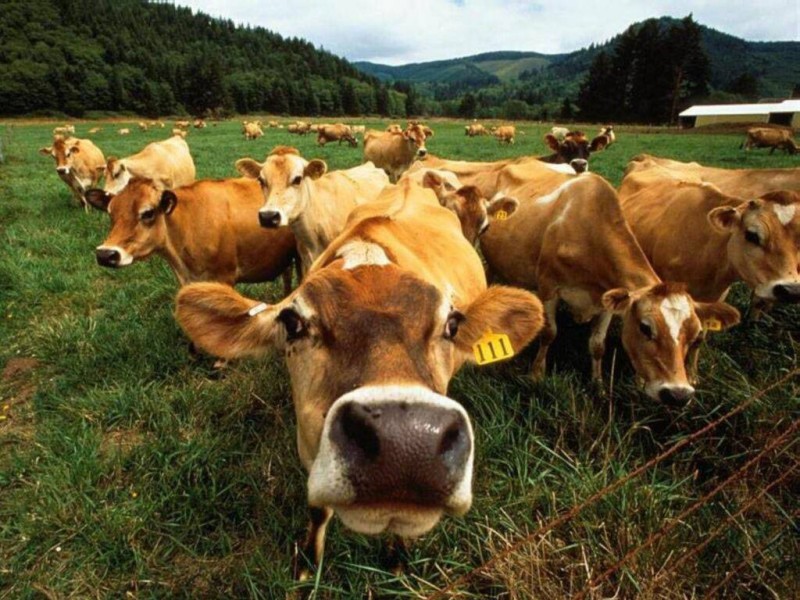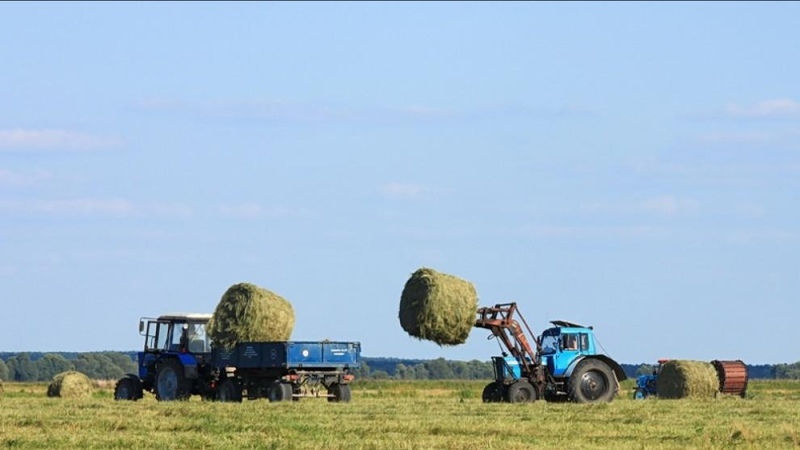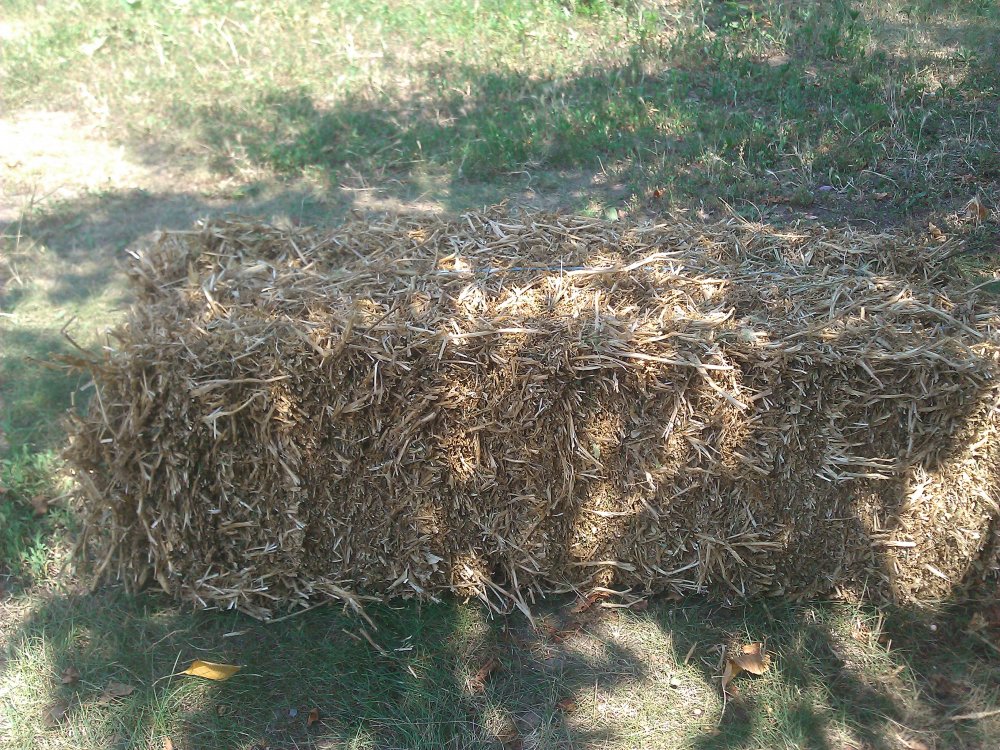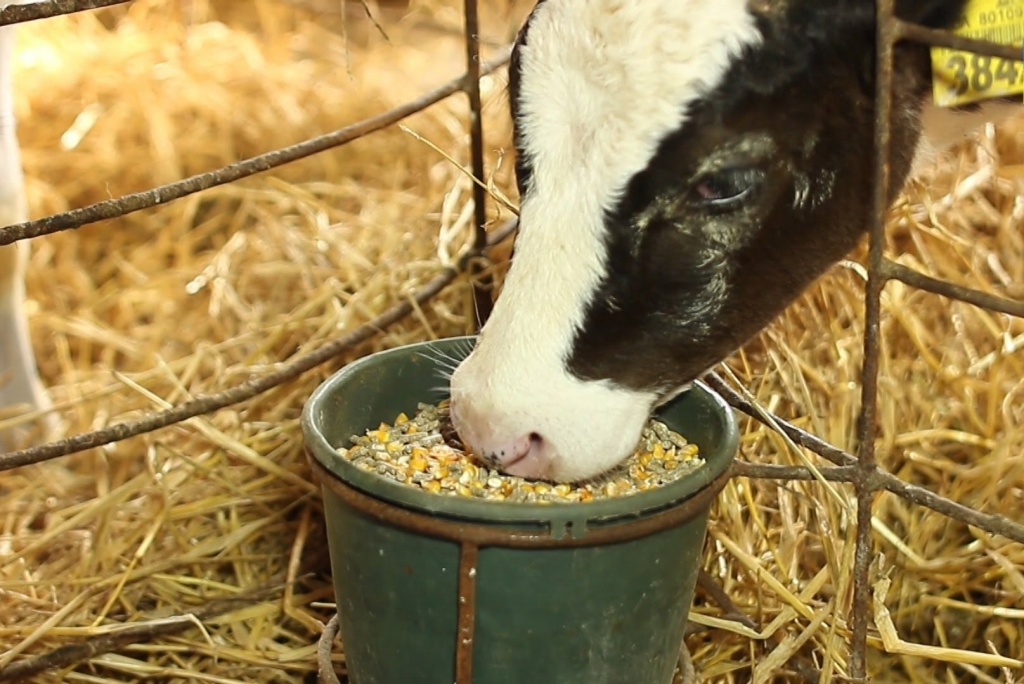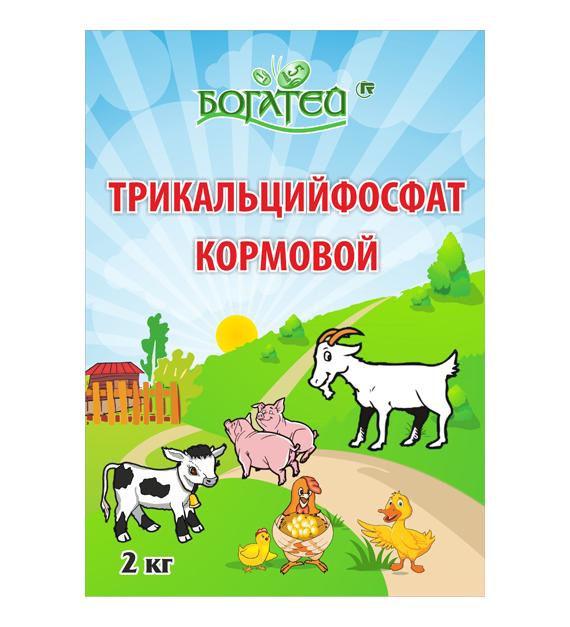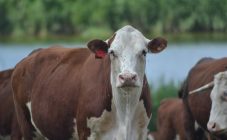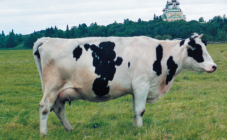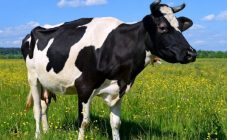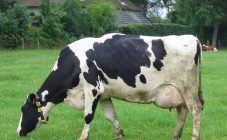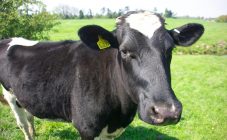Content:
Farmers who have only recently started raising cattle often face difficulties in feeding, especially with large numbers of livestock. An improper animal diet can lead to serious problems. There are no universal recipes for feeding cattle, but there are general rules.
Feeding cattle. General rules
Contrary to popular misconception, livestock diets aren't just about juicy grass. Putting together a balanced “diet” for animals is not easy. Different categories of animals have different nutritional requirements, so the feeding of the sire is significantly different from feeding the heifers. Both the age and health of the animal matter.
However, there are some general rules, for example:
- Food should be in a form suitable for consumption.
- Vitamins, minerals and other valuable substances contained in the feed should be easily digested. Sometimes, to increase digestibility, special nutritional supplements are added, which are a combination of various enzymes.
- Protein, vitamins and minerals should be in the right proportion.
- Overfeeding animals, that is, overfeeding, leads to disruptions in the reproductive system of cattle.
More recently, hay was considered the main food for cows in most farms. However, due to the development of the domestic feed industry, it is gradually fading into the background. It is being replaced by balanced types of combined nutrition. Compound feeds are convenient because, unlike hay, they do not need to be prepared on their own. They are also additionally enriched with vitamin supplements.
Number of feed units of feed per head of cattle
You can find out how many feed units of feed are required per head of cattle from the table below. Based on these data, the farmer can easily independently calculate the ration for his livestock and properly organize the feeding of cattle. The table shows the ration of an adult dairy cow: the name of the feed for cattle, its quantity and the same volume expressed in the unit of measure "feed unit".
Nutritional value of feed, table for cattle:
| Silo, 30 kg | 6 KE (feed units) |
|---|---|
| Sugar beet, 5 kg | 1.3 KE |
| Wheat bran, 600 g | 0.5 KU |
| Sunflower cake, 1.5 kg | 1.6 KU |
| Meadow hay, 6 kg | 2.6 KE |
In reality, the data may slightly deviate from the standards in one direction or another ("plus" or "minus"), this is quite acceptable. Concentrated cattle feed is considered the most nutritious.
What can be given to cattle: proportions and recommendations
Modern veterinarians give the following recommendations for different types of nutrition:
- Beer grain as feed for cattle. It contains yeast - an important source of vitamin D. Brewer's pellets for cattle can be fed to animals of any age and any breed. The maximum proportion in the diet is 18% of the total feed volume.
- Compound feed for cattle. Adult cattle can be fed coarsely ground feed, young animals - chopped. The main thing is that the food is made in accordance with GOST. When buying compound feed for cattle, the composition is important, but the manufacturing technology is no less important.The maximum share of the total food supply is 50%.
- Meat and bone meal for cattle. Bone meal is a valuable mineral supplement. It should be given to prevent calcium deficiency. For adult cattle, the maximum share in the diet is 1.5%, for young animals - up to 3%, since flour has a beneficial effect on bone formation.
- Pea straw for cattle contains a large amount of coarse fiber, improves bowel function. The maximum proportion in the diet is no more than 15%. However, you should not give pea straw to sick and weakened animals, as this type of feed is often affected by fungi, and can also cause stomach upset due to the high concentration of vegetable protein. Also, such straw is quite difficult to digest.
- Fodder salt. Giving salt is required. Feed salt for animal husbandry is perceived by livestock as a delicacy. This substance contains a large amount of sodium, which has a beneficial effect on metabolism and stimulates the intensive growth of young animals. The maximum proportion in the diet is 0.5%.
- Phacelia as a fodder crop for livestock is of great value due to the content of essential amino acids and antioxidants. However, cows are reluctant to eat this herb, so it is recommended to mix it with other feeds to drown out the specific taste. The permissible share in the diet is not more than 10%.
- Beet pulp contains glucose and other sugars that provide energy. But an excess of beet pulp in the diet can cause diarrhea, so the proportion of beet pulp should be no more than 7% of the total diet. It should be given only to absolutely healthy animals.
- Granular feed for livestock. It is definitely not worth feeding animals only with such food. And you don't need to ignore this type of food either, because such food contains all the necessary nutrients in well-balanced proportions. For young animals, feed with small granules should be purchased, for adult animals - with large ones. The recommended proportion in the diet is 25%.
These recommendations should be followed by those who want to raise healthy livestock. When purchasing combined feed, you should give preference to products of a domestic manufacturer.
Diet for dairy cattle
When keeping dairy cattle, the main task of the farmer is to increase milk yield so that it does not become an unbearable burden for the animals. If we take as a basis such an indicator as the average daily weight gain of cattle, its rate will be different for beef and dairy cows. Dairy cows are not required to gain weight as quickly as breeds bred for meat. Therefore, in the first place should not be the gain in body weight, but the increase in the amount of milk.
When compiling a diet for dairy cattle, keep in mind the following:
- Different breeds of dairy cattle will have a different menu.
- Vegetables, root vegetables and fresh grass should take an important place in the diet. These foods help to increase milk yield.
- A dairy cow should consume up to 40 liters of fluid daily.
- Feeding dairy cattle involves feeding three times a day with a clear fixed time for each meal.
- In summer, the proportion of grass in the diet increases, the proportion of vegetables and root crops decreases.
- In winter, the amount of combined feed increases.
In order for food to be better absorbed, first they give fodder, then juicy vegetables and roots, and last of all - roughage (straw, hay).
Tricalcium phosphate for cattle: instructions for use
Tricalcium phosphate is a valuable mineral supplement to the daily diet of animals. You can buy it at veterinary pharmacies. The preparation is accompanied by detailed instructions for use. If you do not systematically observe the dosage or accidentally exceed the maximum allowable dose, instead of benefit, you can only harm the animal.
Tricalcium phosphate should be used as follows:
- This supplement should be given in the spring when the risk of vitamin deficiency is greatest.
- A single supplement will not do anything. It is necessary to give tricalcium phosphate in a course of 1.5-2 months.
- One head needs 80-100 g of substance per day.
- The powder dissolves in water and is given to animals in liquid form.
Experts say that this complex mineral supplement activates reproductive instincts, stimulates lactation in dairy cows, reduces the incidence of viral and bacterial infections, and reduces the likelihood of giving birth to calves with congenital malformations that are incompatible with life. Also, the regular inclusion of this substance in the diet helps to improve metabolism, has a positive effect on digestion, helps young animals grow quickly and gain body weight.
For dairy cows, tricalcium phosphate is more important than for beef cows, because during intensive lactation, a large amount of calcium is washed out of the animal's body.
Advice and guidance from experienced breeders and veterinarians
In order for a novice farmer to easily adjust the feeding of his livestock, it is recommended to follow the recommendations of experienced herders and practicing veterinarians. Here's what they advise:
- When preparing hay yourself, you need to make sure that no poisonous plants get into it. Also, do not graze the herd in areas where these crops grow.
- If animals eat a lot of pelleted food, they may be thirsty all the time, so make sure you get enough liquid.
- Dairy cows need to be watered more actively than beef cows, as they spend more liquid.
- In addition to meat and bone meal, powdered eggshells can be added to animal food as a valuable source of calcium.
- If the cattle is gaining weight poorly, do not immediately increase the single portion of feed. First you need to consult with a specialist. If the cows are sick, increasing the usual portion will only hurt. First you need to find out the reason for the poor weight gain and only then take action.
It should be borne in mind that in the summer, when most of the diet consists of fresh juicy feed (grass, vegetables, roots), fermentation processes in the stomach can be activated in animals. In this case, the proportion of dry compound feed should be increased. Also, food supplements containing digestive enzymes, from which food is more easily absorbed, will help solve the problem.
If you properly organize the nutrition of animals, the livestock will grow and develop safely. The feed intended for livestock must be of the right quantity and quality. You should also take into account the individual needs of different categories of animals. And then the farmer's milk yield will increase or after slaughter there will be a large meat yield.
